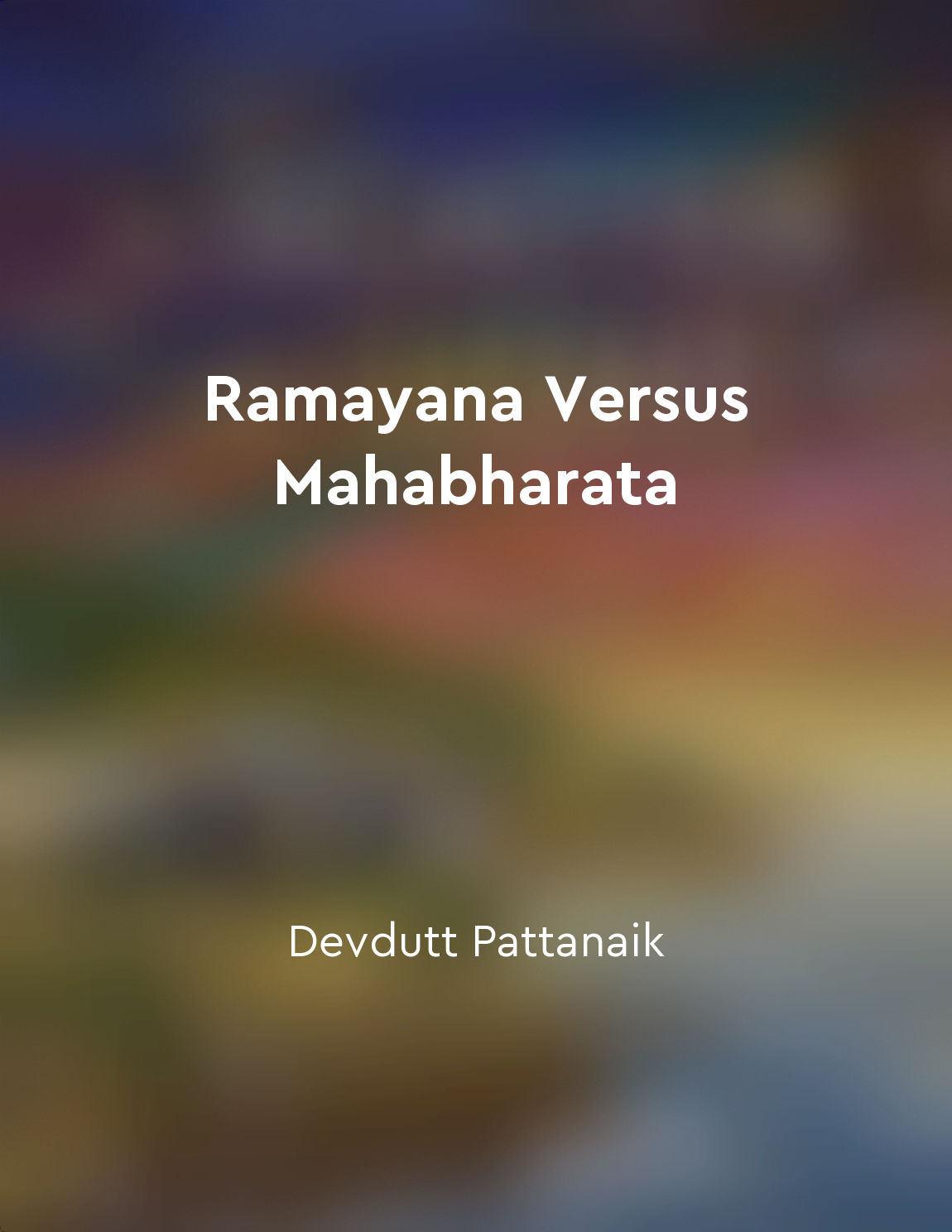Krishna as charioteer from "summary" of The Mahabharata by Dwaipayana Vyasa
In the great epic tale of The Mahabharata, the character of Krishna assumes the role of a charioteer to the warrior prince Arjuna during the Kurukshetra War. This seemingly simple act holds a deeper symbolic significance that resonates throughout the text. Krishna's role as a charioteer serves as a metaphor for his guidance and protection of Arjuna on the battlefield. As the charioteer, Krishna steers the course of the chariot, navigating through the chaos of war with wisdom and clarity. In this way, he becomes not just a physical guide, but a spiritual mentor to Arjuna, offering him counsel and guidance in times of doubt and confusion. Moreover, Krishna's presence as a charioteer highlights his divine nature and omnipresence in the lives of the Pandavas. By assuming the humble role of a charioteer, Krishna demonstrates his willingness to serve and protect his devotees, no matter how menial the task may seem. This humility and selflessness are emblematic of his divine grace and compassion towards those who seek his guidance. Furthermore, Krishna's role as a charioteer underscores the concept of dharma, or righteous duty, which is a central theme in The Mahabharata. Through his actions and teachings, Krishna shows Arjuna the path of righteousness and encourages him to fulfill his duty as a warrior without attachment to the fruits of his actions. By embodying the ideals of dharma, Krishna sets an example for Arjuna and all readers of the epic to follow in their own lives.- The concept of Krishna as a charioteer in The Mahabharata is a powerful symbol of guidance, protection, humility, and righteousness. Through his role as a charioteer, Krishna imparts valuable lessons to Arjuna and readers alike, reminding us of the importance of staying true to our principles and seeking divine guidance in times of need.
Similar Posts
Essence of true wisdom and knowledge
True wisdom and knowledge, as expounded in the Bhagwat Gita, is not merely the accumulation of facts and information. It goes b...
Kurukshetra war declared
The Kurukshetra war was a pivotal event in the epic Mahabharat, which changed the course of history for the Kuru dynasty. It al...

Ramayana's Panchavati is exile, Mahabharata's Dvapara Yuga is era of war
In the Ramayana, Panchavati is the forest where Rama, Sita, and Lakshmana live during their exile. It is a place of peace and t...
The concept of oneness
The concept of oneness is a central teaching in the Bhagavad Gita, emphasizing the interconnectedness of all beings and the uni...

The bonds of family
In the great epic tale of the Mahabharata, the theme of familial bonds is woven deeply into the fabric of the story. The relati...

Importance of selfless action
Selfless action is considered to be of great significance in the Bhagavad Gita. Lord Krishna emphasizes the importance of perfo...
Divine knowledge
The concept of divine knowledge is explained in the Shrimad Bhagwat Geeta as the ultimate wisdom that transcends human understa...
The tragic deaths of the Kauravas
The Kauravas were the hundred sons of King Dhritarashtra and Queen Gandhari. They were the cousins of the Pandavas, the five so...

